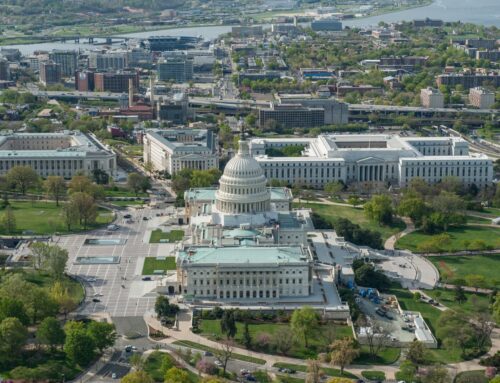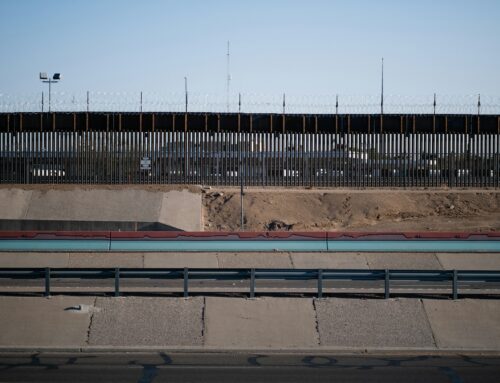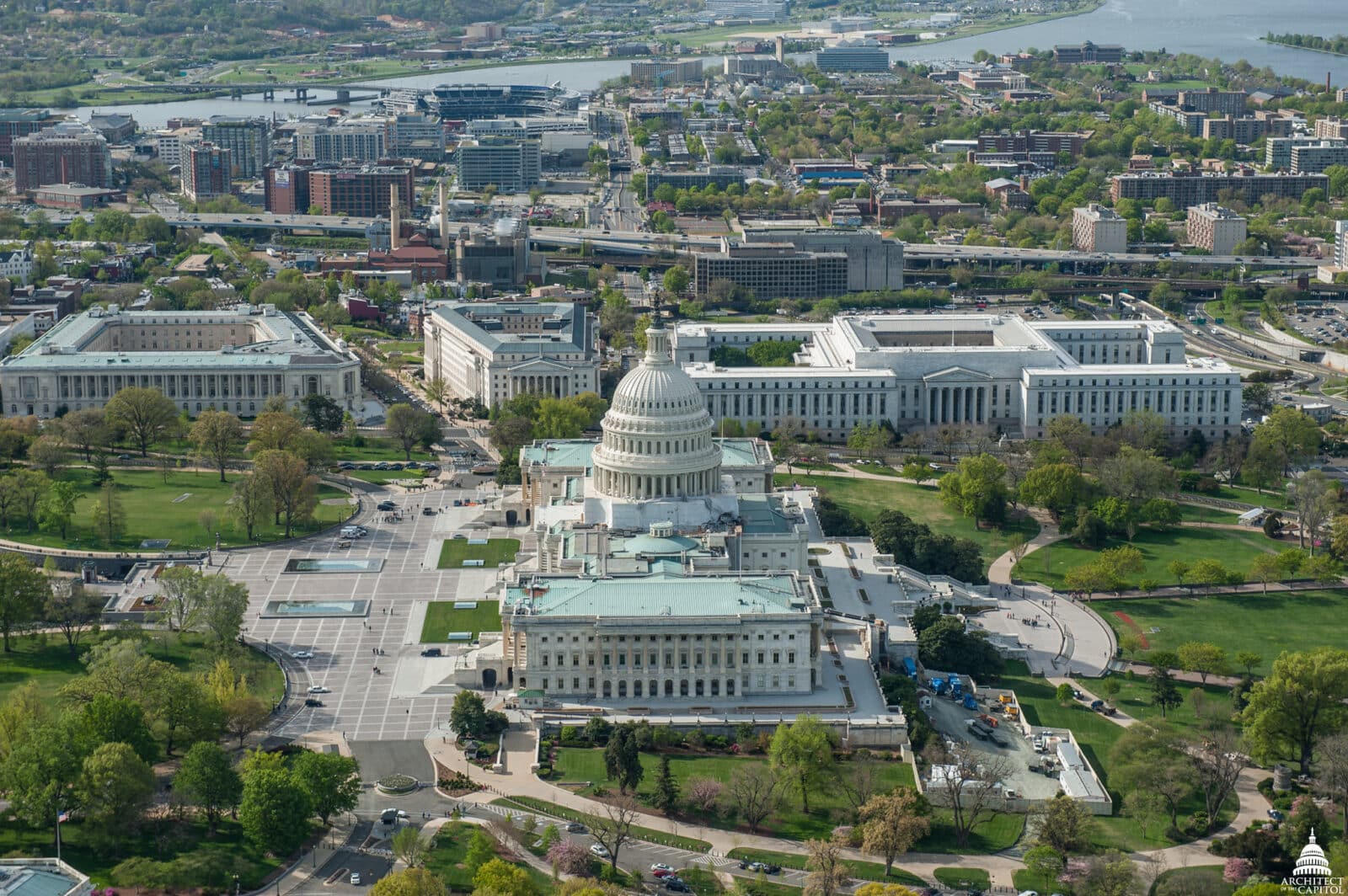Read this article below in plain text, further down as a viewable PDF, or by downloading here.
On January 20, 2021, Joseph Robinette Biden Jr. becomes the 46th President of the United States. At Taxpayers for Common Sense we’re always looking for memorable ways to suggest fiscally sound federal policies.
Today we reveal our “Four Point Six” memo. This is our set of 4.6 recommendations the Biden Administration should follow in various areas of governance to promote policies to restore fiscal balance, increase transparency and accountability, and reduce the deficit.
Why 4.6? Honestly, would you read a list of 46 recommendations for a bunch of federal agencies? Hey, we would, but we’re nerdy that way. Know your audience. Nobody’s sitting still for all that. So, 4.6 it is. In each case we consider the “Point Six” recommendation to be pretty “low hanging fruit,” to use that overused phrase. The last recommendation for each agency is something they can commit to in the early days of the Biden Administration.
Read on.
Department of Agriculture
- Implement, Don’t Undermine, the Farm Bill: The Trump Administration routinely flouted both the spirit and letter of the Farm Bill. Providing “emergency” income subsidies to tobacco growers (banned since 2004). Arbitrary changes in nutrition programs weeks after the changes were rejected by lawmakers. Replacing trade with federal aid. The Biden Administration would do well to eschew the shadow farm bill crafted in the Secretary’s office for the one passed by Congress.
- Narrow the Farm Safety Net to Focus on Needs: In ignoring the Farm Bill, the Trump Administration ignored Congressionally-set limits on farm subsidies enabling some farm operations to rack up millions in subsidies. The new administration needs to follow the will of Congress and eliminate subsidies for millionaires and those simply farming the Treasury.
- Promote Resilience not Dependence: Trade war bailouts, overly generous Farm Bill programs, and duplicative post-disaster “emergency” assistance pushed farm subsidies to near record levels, even before COVID-19. While some special interests want to continue this unsustainable subsidization, the administration needs to refocus on opening opportunities, not maximizing payments.
- Increase USDA Transparency: An increasing body of evidence shows that adopting conservation practices can make farmers and ranchers more profitable. The USDA has valuable data on conservation practices and their effect on farm profitability, yet most of this data is off limits to researchers and farmers. In future COVID-19 assistance the USDA should implement, or Congress should mandate, the creation of a data warehouse and procedures for granting access to data on the impacts of conservation practices on farming and ranching profitability.
4.6. DNR the CCC: The Trump Administration’s use of the Commodity Credit Corporation (CCC) as a political slush fund to side-step Congress and dole out billions in subsidies to favored interests could cause lasting damage to the farm sector and farm safety net. The Biden Administration needs to commit to making farm policy through farm bills, not by fiat.
Climate Policy Team
- Accountability for Polluters: Investments need to be made, but don’t forget to hold responsible parties accountable and not leave taxpayers paying the price alone.
- Do Not Embrace False Solutions: Things like nuclear power and carbon capture and storage can be enticing because they have bipartisan appeal, but taxpayers have spent billions on these technologies before and have to shoulder the enormous liabilities they create. More subsidies and incentives for biomass and biofuels can also seem like climate wins but bring with them significant costs for our land, air quality, and overall climate impacts.
- Make Agriculture Part of the Solution: It is little discussed that agriculture has a unique place in climate: a victim, problem, and part of the solution. Align conservation measures to achieve tangible climate goals.
- Reduce Federal Exposure: Huge portions of the country’s national security infrastructure are at risk from climate change due to flooding, wildfire, drought, and high heat. Moreover, federal programs like disaster spending and federal flood insurance serve to increase that risk by fostering building and rebuilding in harm’s way. Pursue programs and policies to mitigate this risk.
4.6. Rollback Rollbacks: Rules like methane waste, the roadless rule, and elevation standards for federally funded construction in floodplains all were common sense policies that took a hit in the last four years. They should return and be strengthened, and the climate policy team should then work with lawmakers to get them enacted into durable law.
Department of Defense
- Overseas Contingency Operations (OCO) account: End use of the “off-budget” OCO account. For years this slush fund has insulated the Pentagon from making the hard decisions every other part of the government has faced. Set the policy objectives. Knowing rough budget constraints, build a strategy to support those policies. Then request funding for the systems and people needed to execute that strategy.
- F-35 Aircraft: Use the recently announced delay of the start of full rate production to reassess inventory needs for the Air Force, Navy, and Marine Corps. This is the most expensive procurement program in the history of the Pentagon. Take the necessary time to get this right.
- Nuclear Triad: Stop the modernization of the land-based Intercontinental Ballistic Missile. This is the least survivable leg of the triad and the contract is still in its early days. Yes, it will cost the government some money to terminate the contract. But, again, what’s the nuclear strategy that requires three methods of delivering nuclear weapons?
- Shipbuilding: Get the Biden Administration shipbuilding plan out early; make sure it’s part of the FY2022 budget request. The Navy just released its much-delayed shipbuilding planning and it’s a whopper of a wish list. Congressional boosters of shipbuilding will now measure everything the Biden Administration decides on shipbuilding against this plan. Don’t wait a year to suggest changes to force structure.
4.6. Congressional “Program Increases”: Immediately take the position that Congressionally recommended increases to Pentagon programs must be both authorized and appropriated at the same level before the Office of Management and Budget will obligate the funds. This will do two things: a) empower members of the authorizing committees, who have been forced into the back seat by appropriators, and b) significantly reduce the amount of program increases the administration is forced to absorb.
Department of Energy
- Make a strategic research plan: Basic research should remain at the core of DOE’s mission, but budgets have ballooned without restraint. Instead of letting Congress throw money at the climate problem, use the Department’s expertise and experience to make a guide (akin to the Quadrennial Energy Review) to say where we’re likely to get higher ROI and where we’re not. Blindly spending billions of dollars more on carbon capture tech and small modular reactors is not a solution.
- Be smart moving beyond MOX: Avoid another boondoggle with better budgeting to dispose of surplus plutonium. The clear lesson from the MOX Facility fiasco is: put in the work up front. Finish 90%+ engineering and design for any new construction, get states’ sign-off for any plutonium shipments, clear legal hurdles, and plan for contingencies. Slow is better than wasteful.
- Cancel development and procurement of the W87-1 nuclear warhead for the Ground Based Strategic Deterrent (GBSD): GBSD is the proposed replacement for the Intercontinental Ballistic Missile leg of the nuclear triad (See our recommendations for the Department of Defense to include terminating the GBSD contract for the convenience of the government.) Relatedly, reduce plans for pit production to reflect the cancellation of the W87-1 warhead.
- Let go of the Loan Guarantee Program: Don’t be fooled by lobbyists touting the program as a way to save clean energy. The program has languished because it’s fundamentally flawed. Rescind any remaining authority and save on the office’s overhead. The last thing taxpayers need is to put up another $12 billion for a badly managed nuclear construction project.
4.6 Do NOT fund the Carbon Free Power Project: A Utah utility conglomerate (UAMPS) wants to build small modular reactors that have already enjoyed lavish government support. Months ago, DOE proposed heaping on another $1.4 billion for the project. Don’t make the same mistake twice; let SMRs sink or swim on their own.
Forest Service
- Reform the Timber Sale Process: End upside-down, subsidized sales that cost more to hold than they generate in revenue. Our federal forests shouldn’t be used to implement corporate welfare. The current Gate System requires the Forest Service to conduct a financial analysis to make sure sales are profitable, for loggers. The result is a program that has cost taxpayers billions of dollars. As a first step, make sure forest managers have to estimate a sale’s total cost to taxpayers.
- Initiate a Transparency Overhaul: Throw open the books, centralize document access, create user-friendly databases. Most public information on Forest Service activities is managed in forest-specific silos. That means understanding the agency overall is endlessly time-consuming. Collect data at the regional and forest-level in one place. Budget and contracting data are particularly opaque. What’s being spent where, on what projects, and what results do we have to show for it?
- Be Smarter about Wildfires: It is time to step back and implement smarter more holistic wildfire strategies. Start with where and how we harden and protect our communities. Mitigation, prevention and planning are key to limiting spread and damage caused by destructive wildfires and post-fire logging can cause more problems down the road. Use post-disaster assistance to “pre-spond” to future wildfire.
- Cap New Capital Projects: Limit new starts on any roads, trails, or facilities until the current capital stock is brought up to code. The Forest Service has a $5 billion deferred maintenance backlog, though where and for what assets is unknown (see item #2). Having a Deferred Maintenance Management Strategy is a good start, but making it public would help, and it’s due for an update in 2022.
4.6. Rescind the Tongass Roadless Exemption: Immediately begin a rulemaking process to rescind the 2020 rule that completely exempts the Tongass National Forest in Alaska from the 2001 National Roadless Rule. The chosen option to remove protections from 9.4 million acres was indefensible, and once the cost-benefit analysis for the policy was corrected, its net cost was negative. More roads mean more roadbuilding costs and more timber sale subsidies. The Tongass timber program has lost roughly $1.7 billion over the last 40 years, and it’s time to stem the losses.
Department of Homeland Security
- Border Barriers: Immediately exercise contract options to terminate barrier construction contracts for the convenience of the government. Yes, it will cost the government some money to terminate the contracts for convenience, but that’s why government contracts contemplate potential terminations.
- Border Barriers Redux: Return land that has been condemned or taken under eminent domain to the previous owners.
- Immigration Reform: Work with lawmakers to pursue common sense, comprehensive, and durable immigration reform.
- Border Security: To encourage Congressional interest in immigration reform, develop a package of high-tech/low-touch border security measures as a less intrusive alternative to barriers.
4.6. DHS Roles and Missions Review: Begin a department-wide assessment of the shape and scope of DHS. This department was cobbled together in haste, and in response to the terrorist attacks of 2001. It consists of widely disparate agencies that may better fit under other federal departments. Be bold and consider potential changes early in the Biden Administration.
Department of the Interior
- Update Century-Old Lease Terms: Increase the onshore federal oil and gas royalty rate set in 1920. The current rate of 12.5% not only lags most states (Texas charges up to 25%), but also costs us enormously – like up to $12.4 billion over the last ten years if we charged the rate for offshore oil and gas, 18.75%. And update the ridiculously low rate for grazing on federal lands that’s less than 10% of what private landowners charge.
- Let the Public into the Process: Overhaul outdated data systems, look at states for models of how to let the public see who is drilling, and which companies control which leases. Some DOI data tracking has improved – like RevenueData.gov – but is still too limited and others are stuck in the Stone Age. Standardizing and collecting lease sale results is badly needed, as is basic disclosure of which companies are nominating land for lease. More transparency up front should be standard protocol and will reduce time to fill tedious document requests on the back end.
- End the Hardrock Mining Giveaway: Collect data on the tonnage of gold, silver, uranium, and other “hardrock” minerals taken from federal lands. We collect $0 when private companies sell precious metals removed from federal lands. While Congress needs to replace the General Mining Law of 1872 with a leasing system, the DOI can start collecting data now. We don’t even know how much we’re losing, and that’s unacceptable, especially because some of these are “critical” minerals needed for our modern age.
- Plug the Leaks in Resource Rules: A royalty rate is a flat percentage, but there are rules that govern how to measure the amount of resource it applies to, how to value that oil, gas, and coal, and in what circumstances the royalty doesn’t apply. There are now figurative leaks in the revenue stream, and in the case of the methane waste rule, allowances for literal leaks of natural gas. DOI needs to plug the leaks to make sure taxpayers are paid in full.
4.6. Press Pause on Federal Oil & Gas Leasing Program: Take a step back and reform the systems for leasing federal oil and gas (and coal) so taxpayers get fair market value before resuming lease sales. The Trump Administration leased federal lands at a record pace in the last four years, even during the pandemic, despite systemic problems that allow land to be leased for less than $5/acre or for no bid at all. Legacy provisions also enable speculators to sit out sales and get parcels anonymously a day or two later.
Office of Management and Budget
- Congressional Power of the Purse: Publicly pledge to observe Congressional primacy in the appropriations process. Publicly post all Antideficiency Act, Impoundment Control Act, and Purpose Statute action on the websites of both the Office of Management and Budget and the Government Accountability Office websites.
- Better Access: Consolidate all the agency budget justification documents and make them available on one central website.
- Budget at Glance: Develop an understandable and relatively simple Citizens Budget as done by other countries and as recommended by the International Budget Partnership. This is a non-technical, objective document released with the overall budget proposal. It would consist of simple and effective infographics, charts, and tables, such as a “Budget at a Glance” table showing revenue, spending, the budget balance, public debt and other important information for the proposed budget and recent years. The existing summary tables are buried and not useful to the average citizen, and the budget narrative is little more than a press release by agency about what that particular president is trying to achieve. Budgets need to be more accessible. In addition, an actual evaluation of previous budget performance would be extremely useful.
- Review and Update Legacy Instructions to Agencies: The current instruction to the Pentagon on how to determine whether to request funding under base budget or the Overseas Contingency Operations slush fund is roughly a decade old and has been overcome by world events. No doubt there are other examples of outdated instructions to the agencies. Commit to a review and update of those instructions.
4.6. Fix the OMB Website. It’s not obvious where to find the budget, and the flow is less intuitive than in previous administrations. In general, the site seems to be more about hiding information than providing it.













Get Social